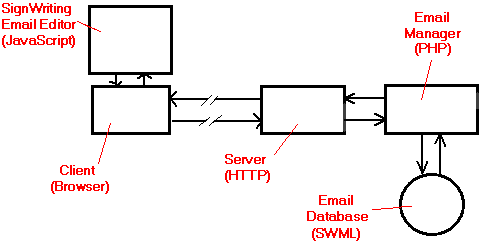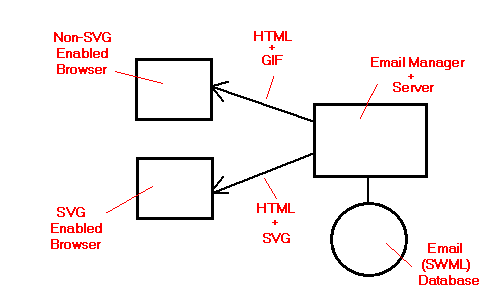|
|||||
|
|
|||||
|
6. Prospects for an SWML-based application: SW-WebMail To illustrate the use of SWML in the storage and processing of sign language texts, we are building SW-WebMail, an SWML-based webmail service. The following figure shows the overall architecture of the system.
The critical component of the SW-WebMail system is, certainly, the SignWriting Email Editor. Its functionality should provide, at least, means for building full SignWriting signs (all symbols should be allowed). Important editing functions, such as copy, cut, paste and search of signs in the email body, and of symbols within signs, will be included in the editor on the tradeoff of the size the resulting script, since the idea is that the editing process will happen within a web page, downloaded from the server whenever the user wants to edit a new message. Signs will be built graphically, by being represented in SVG in the browser. The editing process will operate, thus, on the SVG-DOM tree of the sign being built, as shown in the figure below, along with on the XML-DOM tree representing the SWML file that corresponds to the message.
On sending the message to the server, however, only the SWML file will be sent and stored in the server. This will allow the users to choose the way they want to render received messages: either by symbols represented by small GIF files, or by symbols represented in SVG - a choice to be made when reading the messages, in accordance with the capabilities of the browsers their are using (as shown in the figure below).
|
|||||
|


